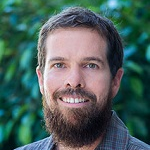Applications of Structure-from-Motion Photogrammetry in Coastal and Marine Studies
A special issue of Geosciences (ISSN 2076-3263).
Deadline for manuscript submissions: closed (15 May 2022) | Viewed by 4967
Special Issue Editors
Interests: coastal geomorphology; sedimentology; marine geology; coastal management
Interests: coastal; structure-from-motion; drones
Special Issues, Collections and Topics in MDPI journals
Special Issue Information
Dear Colleagues,
Structure-from-motion (SfM) is a topographic survey technique that has recently emerged from traditional photogrammetry and advances in computer vision, offering potential to generate high accurate dense point clouds at different scales, to restitute the three-dimensional geometry of objects or surfaces. SfM uses image matching algorithms that rely on the multiscale image brightness and colour gradient between the object and its background, to identify features present in multiple digital images, regardless of changes in scale and viewpoints. It therefore offers exciting opportunities to characterise and detect changes in the surface topography of coastal and marine features and landforms in unprecedented detail. This can be done from a range of different cameras, lenses and platforms, applied both on land and underwater. The applications of SfM in coastal and marine geosciences are vast, ranging from geomorphology, sedimentology, natural hazards, biogeography, structural geology, geoheritage, archaeology, etc.
This Special Issue aims to document the vast applications of SfM across different coastal and marine environments, such as coastal barriers, sandy and boulder beaches, rock platforms, tidal flats, mangroves, salt-mashes, rock reefs, coral reefs, nearshore and deeper waters. We welcome original contributions addressing a wide range of processes and scales, especially those highlighting diverse and novel approaches. Submitted papers are expected to meet a series of criteria, including: i) a sound description of methods such as equipment and photogrammetric processing; ii) model parameters (key points/image, camera optimisation, matches/calibrated images, etc.); iii) assessment of topographic quality through comparison against independent points; and iv) appropriate acknowledgement and handling of uncertainties.
We also encourage you to send us a short abstract outlining the purpose of the research and the principal results obtained, in order to verify, at an early stage, if the contribution that you intend to submit fits with the objectives of the Special Issue.
Dr. Rafael C. Carvalho
Dr. Javier Leon
Dr. Luis Conti
Guest Editors
Manuscript Submission Information
Manuscripts should be submitted online at www.mdpi.com by registering and logging in to this website. Once you are registered, click here to go to the submission form. Manuscripts can be submitted until the deadline. All submissions that pass pre-check are peer-reviewed. Accepted papers will be published continuously in the journal (as soon as accepted) and will be listed together on the special issue website. Research articles, review articles as well as short communications are invited. For planned papers, a title and short abstract (about 100 words) can be sent to the Editorial Office for announcement on this website.
Submitted manuscripts should not have been published previously, nor be under consideration for publication elsewhere (except conference proceedings papers). All manuscripts are thoroughly refereed through a single-blind peer-review process. A guide for authors and other relevant information for submission of manuscripts is available on the Instructions for Authors page. Geosciences is an international peer-reviewed open access monthly journal published by MDPI.
Please visit the Instructions for Authors page before submitting a manuscript. The Article Processing Charge (APC) for publication in this open access journal is 1800 CHF (Swiss Francs). Submitted papers should be well formatted and use good English. Authors may use MDPI's English editing service prior to publication or during author revisions.
Keywords
- Digital Surface Model (DSM)
- photogrammetry
- remote sensing
- point clouds
- historical archive
- UAV, UAS, Drone
- ROV
- diving rigs
- mobile mapping







